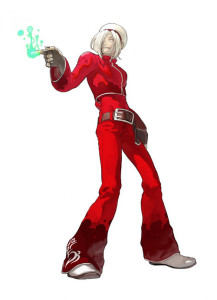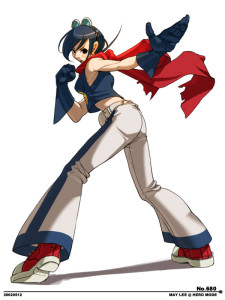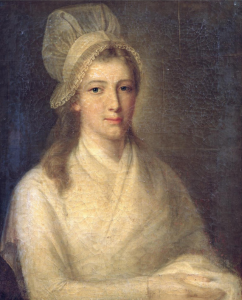Female Assassins Wanted: Ubisoft and the Status of Women in Games
by RadiumEyes, HSM team writer
Perhaps you watched this year’s E3, and heard the announcement from Ubisoft that they will not include female assassins in Assassin’s Creed: Unity.
Now, that alone raises a few questions. Did they intentionally make the playable assassins exclusively male in order to continue the narrative structure of the previous games (which also included male assassins as protagonists)? Did they simply assume men would more likely associate with the characters, and thus plan accordingly? Are they not aware of Charlotte Corday, whose assassination of Jean-Paul Morat became one of the most notable examples of females in the business?
This issue, however, gets stranger – Alex Amancio, in an interview, stated that including women as assassins would effectively double their workload, without giving any reasonable explanation regarding how that’s possible.
Allow me to raise the eternal question posed by George Takei: “Really? Really?”
This casts an unfortunate light on the video game industry, not to mention Ubisoft specifically; after all, the woman as video game protagonist has a complicated history, and seeing a major developer backpedal like this reinforces this unstated “boys’ club” mentality when it comes to particular genres. By this point in gaming history, we’ve seen games such as The Last of Us and the original Tomb Raider games for the PS1 illustrate the viability of female characters as the central figures of game narratives, even though companies apparently have some trouble approaching their physical and emotional representations. Lara Croft, for all her dynamic characterization and whatnot, still contends with the frustrations that come with the “male gaze,” something that crops up elsewhere in the gaming world; what made her stand out, however, was that she didn’t simply exist as a “female Indiana Jones.” Lara could stand on her own two feet, taking on any challenge she came across throughout her outings with due seriousness; iconic gaming characters such as Cammy (Street Fighter) or King (King of Fighters) presented some nice contrasts to the typical “eye candy” that seemingly exist only for the male gamer to enjoy. Even someone like Princess Peach, long the archetypal “damsel in distress” in video games, has her moments to shine – the Mario Kart and Super Smash Bros. series shows her playing on a more egalitarian field with her male compatriots, breaking from her traditional role as the kidnapped royalty whom Mario must rescue from Bowser/King Koopa.
 This makes Ubisoft’s decision all the more curious – if Peach can stand her ground in a competitive environment, where her gender doesn’t define her (at least, not as dramatically as it once had), why can we not see female assassins?
This makes Ubisoft’s decision all the more curious – if Peach can stand her ground in a competitive environment, where her gender doesn’t define her (at least, not as dramatically as it once had), why can we not see female assassins?
This feels like a step backwards, an inadvertent reminder that gaming studios may still struggle with the concept of a playable character who happens to be a woman; it marks an unnecessary distinction along gender lines, even if the developers do not intend for that. Somehow, the female body is different enough from the male to make Ubisoft consider it troublesome work to put in the effort to make Unity’s line-up more diverse.
That I’m even writing about this baffles me. When we did we miss that left turn at Albuquerque, anyway? It feels like we’re stuck in a bizarre time displacement, where the video game industry makes some definite strides in gender equality (see: The Last of Us), but still maintains some of the old perceptions of women, such as the “pin-up girl” image that Marilyn Monroe resisted in her film career.
This brings to mind some of the odd designs companies went with when developing female characters – Fatal Fury’s Mai Shiranui, to give a famous example, has a rather “noticeable” physique that made her famous, and the Dead or Alive series took this to an extreme with the Xtreme Beach Volleyball games. Drawing so much attention to the body probably hits one of the core issues that the industry’s had to deal with for some time – for the longest time, women were equated with sex appeal, and characters who otherwise would be seen as awesome or well-written get overshadowed by their designs.
Ubisoft doesn’t have to fall into this trap; it showed, with James Kidd in Assassin’s Creed IV, that women don’t have to be sexualized for a major release, so that sentiment could easily carry over to Unity. But all this speculation still leaves us with the unfortunate fact – no female assassins, something Ubisoft could’ve easily rectified by including, say, the aforementioned Charlotte Corday. Incidentally, Corday’s assassination of Marat was the inspiration of a famous painting by Jacques-Louis David; this can easily be integrated into the plot, as Corday (a member of the Girondin family) blamed Marat for the September Massacres of 1792. Assassin’s Creed revels in political intrigue, and such an event would work perfectly with the Unity story. I’m hardly the first gaming journalist to point this out.
Regardless, I find myself bemused by Ubisoft’s explanation – do developers really see female characters as “double the work,” figures who must be designed and implemented in an entirely different fashion than men? Fighting games and survival horror (the latter of which includes Clock Tower and Fatal Frame) don’t seem to have that much trouble having a more diverse roster; indeed, characters such as Ash Crimson demonstrate how gender (as opposed to biological sex) is mutable, and one can simultaneously show “feminine” or “masculine” traits without any problems whatever.
Perhaps the overarching culture has some time yet before fully accepting the complexities of gender roles; or maybe developers don’t quite follow the pulse of the consumers, who want more diversity in their gameplay. Whatever the case, excluding the option to play female assassins for such a bizarre reason only makes this look bad for Ubisoft; we’ve already seen some significant departures from the standard depictions of women in games, such as Child of Light, and the industry would do well to realize that women aren’t mysterious beings beyond mortal comprehension.
 What this boils down to is this: no one enjoys being patronized in such an obvious manner, and we live in a time where asking the same questions about women in popular media for several decades without any overt effort to change becomes frustrating to no end. Women comprise half of the human species, and seeing such poor explanations for the lack of playable female characters in an AAA title only serves to make us wonder where we stand as a culture; the image of the video game as a “boys’ club” disappeared around the time we noticed that games such as Halo pander to a gender-based cultural mythos where the heterosexual male is the dominant figure. Mass Effect, despite its divisive conclusion, showed us that making the protagonist female doesn’t mean extra work, and it does not draw our attention to gender; Shepard is a very effective leader, no matter which gender you choose, illustrating how equality could be achieved.
What this boils down to is this: no one enjoys being patronized in such an obvious manner, and we live in a time where asking the same questions about women in popular media for several decades without any overt effort to change becomes frustrating to no end. Women comprise half of the human species, and seeing such poor explanations for the lack of playable female characters in an AAA title only serves to make us wonder where we stand as a culture; the image of the video game as a “boys’ club” disappeared around the time we noticed that games such as Halo pander to a gender-based cultural mythos where the heterosexual male is the dominant figure. Mass Effect, despite its divisive conclusion, showed us that making the protagonist female doesn’t mean extra work, and it does not draw our attention to gender; Shepard is a very effective leader, no matter which gender you choose, illustrating how equality could be achieved.
Cultural norms regarding gender play a heavy role in this, and the major hurdle seems to be recognizing women as equal in cultural standing to men; nothing physically prevents developers from making female protagonists, but Ubisoft’s curious statement betrays a confusion over how to effectively present female characters on a console release. Perhaps the first thing to emphasize is that making women for a video game doesn’t take nearly as much work as Alex Amancio suggests; we’ve seen female characters in games since nearly the industry’s inception, so treating the sexes differently only confounds outside observers.
Share
| Tweet |



 Twitter
Twitter